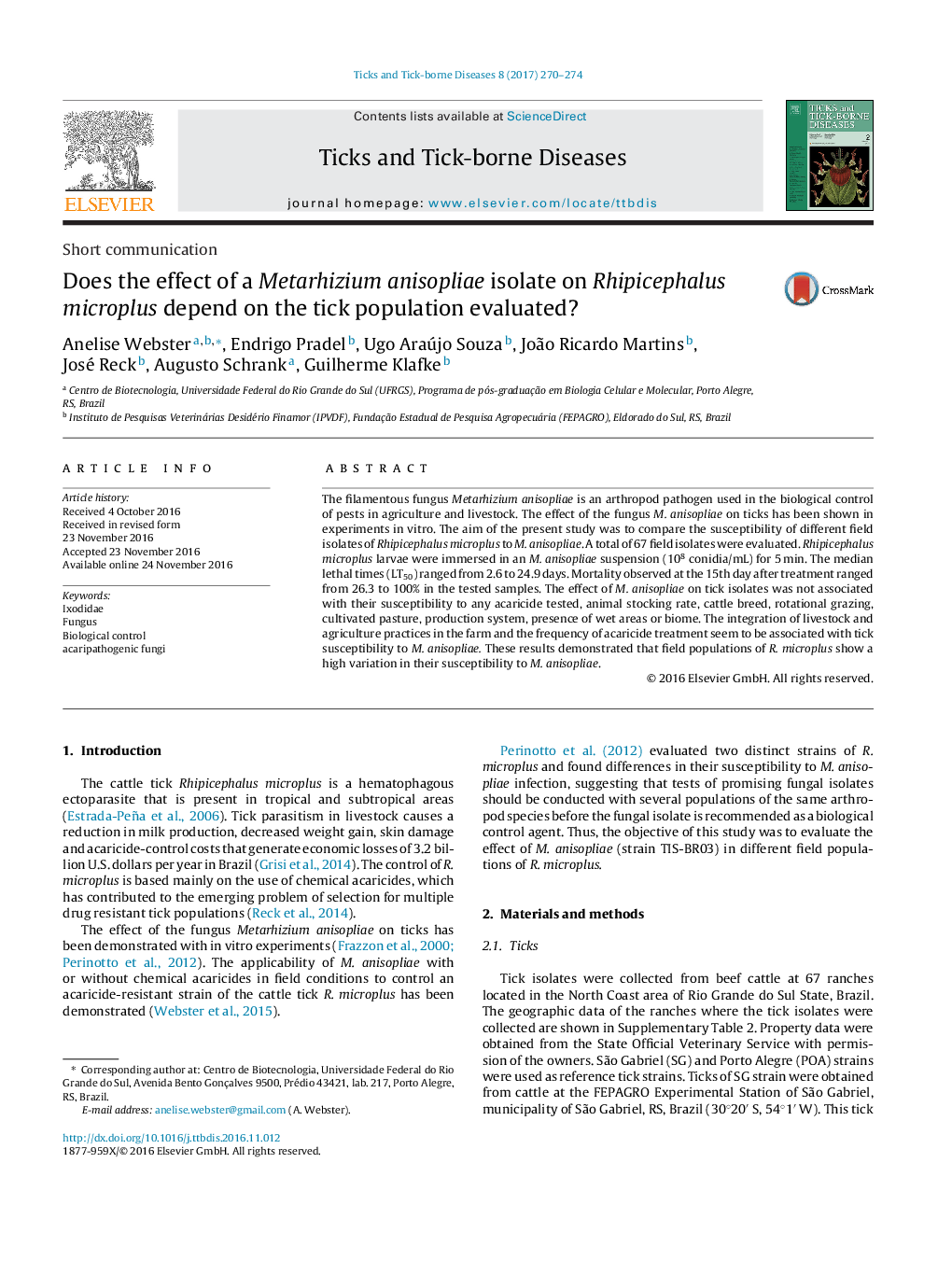| Article ID | Journal | Published Year | Pages | File Type |
|---|---|---|---|---|
| 5546479 | Ticks and Tick-borne Diseases | 2017 | 5 Pages |
â¢Effect of Metarhizium anisopliae in ticks of field populations has been investigated.â¢Ticks of field populations show a high variation in susceptibility to M. anisopliae.â¢There is no correlation between susceptibility to M. anisopliae and acaricide resistance.
The filamentous fungus Metarhizium anisopliae is an arthropod pathogen used in the biological control of pests in agriculture and livestock. The effect of the fungus M. anisopliae on ticks has been shown in experiments in vitro. The aim of the present study was to compare the susceptibility of different field isolates of Rhipicephalus microplus to M. anisopliae. A total of 67 field isolates were evaluated. Rhipicephalus microplus larvae were immersed in an M. anisopliae suspension (108 conidia/mL) for 5Â min. The median lethal times (LT50) ranged from 2.6 to 24.9Â days. Mortality observed at the 15th day after treatment ranged from 26.3 to 100% in the tested samples. The effect of M. anisopliae on tick isolates was not associated with their susceptibility to any acaricide tested, animal stocking rate, cattle breed, rotational grazing, cultivated pasture, production system, presence of wet areas or biome. The integration of livestock and agriculture practices in the farm and the frequency of acaricide treatment seem to be associated with tick susceptibility to M. anisopliae. These results demonstrated that field populations of R. microplus show a high variation in their susceptibility to M. anisopliae.
